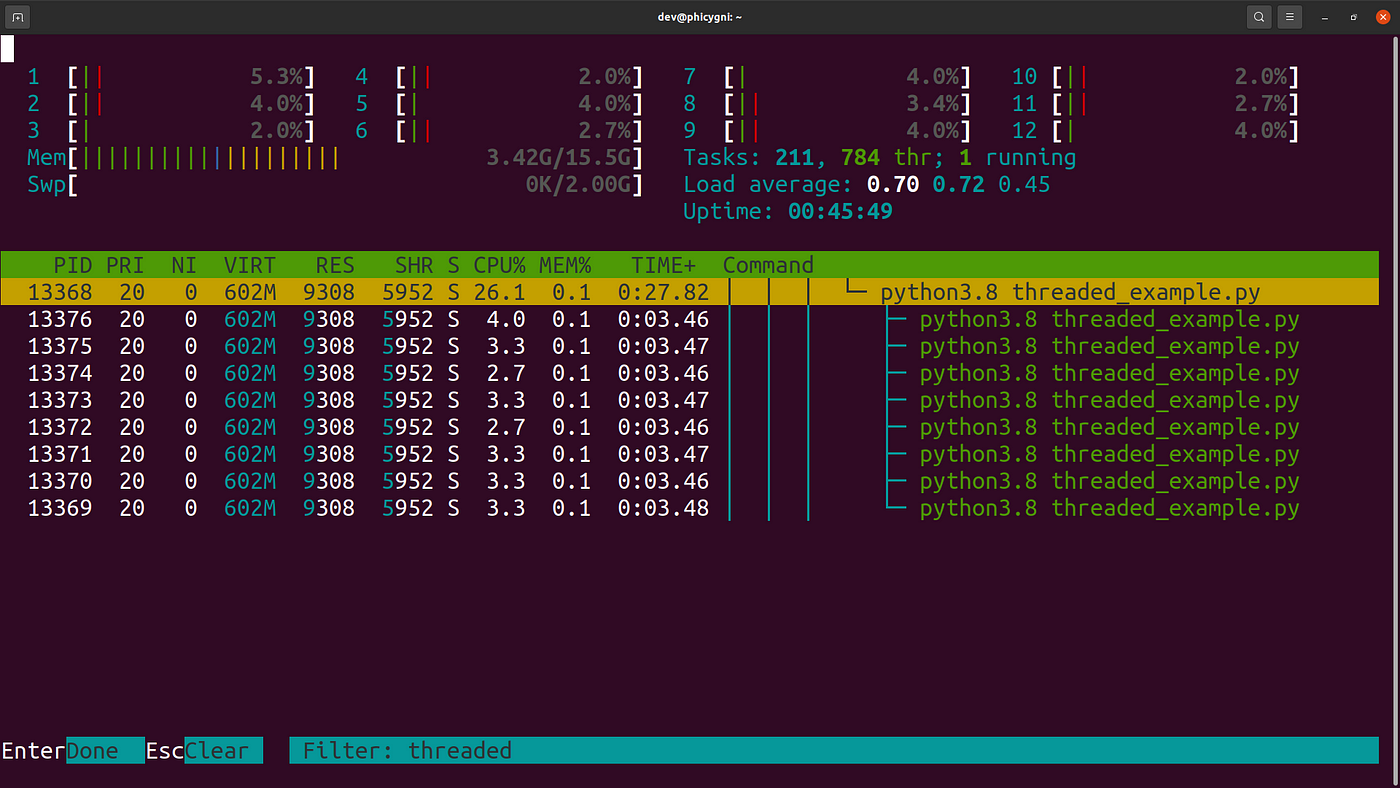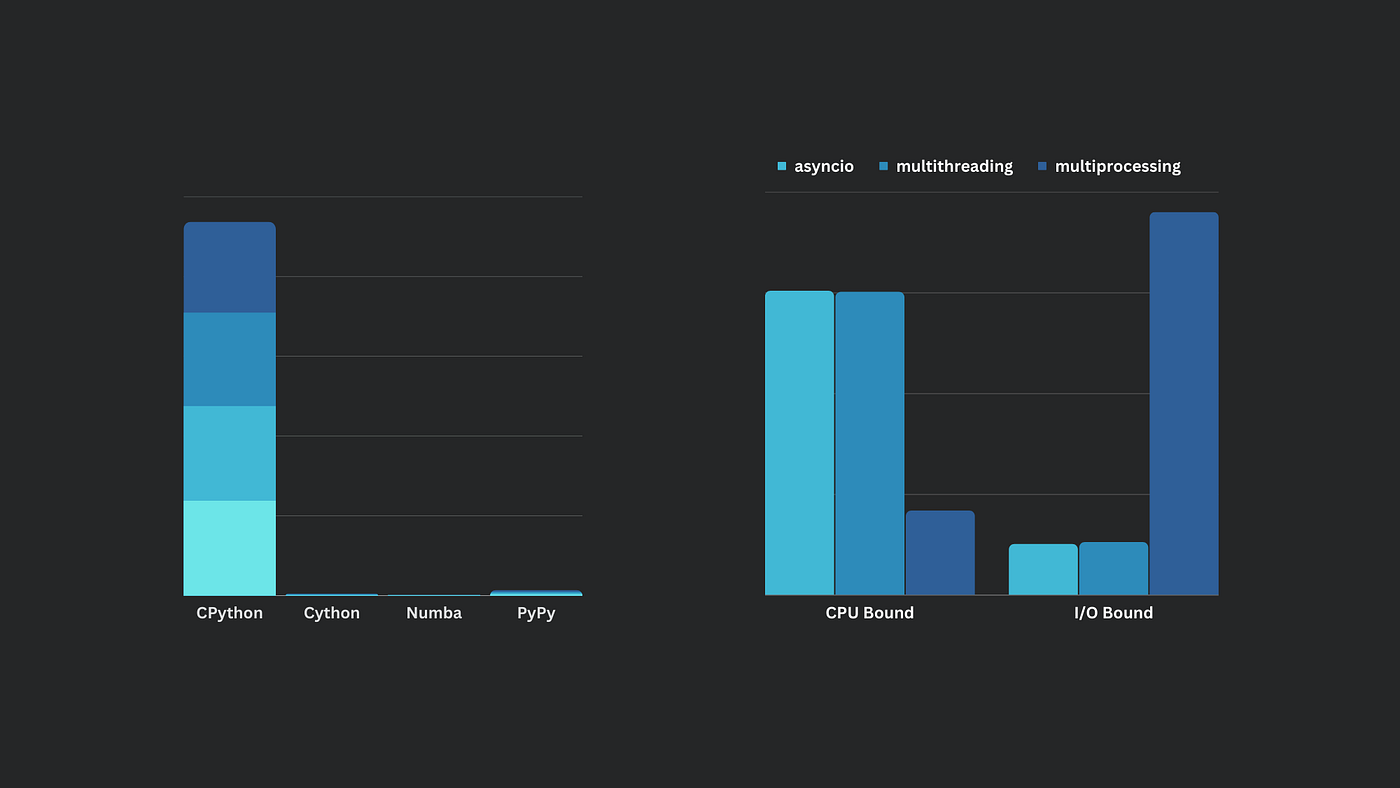Antwort Why is multithreading slow in Python? Weitere Antworten – What is the difference between asyncio and multithreading in Python
Multithreading, multiprocessing and asyncio provide different approaches to concurrency and parallelism in Python. Multithreading uses threads in a single process, multiprocessing spawns separate processes while asyncio leverages an event loop and coroutines for cooperative multitasking.Managing the execution of many tasks so they can overlap and advance simultaneously is called concurrency. To achieve maximum performance, parallelism, on the other hand, entails carrying out numerous tasks concurrently using different processing units.Steps to Implement Concurrency in Python
Create Worker Roles: Define the functions or methods that represent the jobs you want to run simultaneously. Create Threads, Processes, and Tasks: To execute your worker functions concurrently, create and launch threads, processes, or asynchronous tasks.
Is multithreading in Python worth it : This is why Python multithreading can provide a large speed increase. The processor can switch between the threads whenever one of them is ready to do some work. Using the threading module in Python or any other interpreted language with a GIL can actually result in reduced performance.
Is Python good for multithreading
Python comes with two built-in modules for implementing multithreading programs, including the thread , and threading modules. The thread and threading modules provide useful features for creating and managing threads.
Why concurrency is better than parallelism : While concurrency focuses on managing multiple tasks efficiently with one resource, parallelism utilizes multiple resources to execute tasks simultaneously, making processes faster. Concurrency is about juggling tasks, and parallelism is about teamwork to achieve tasks concurrently.
When possible (Amdahl's Law), parallelism will increase the throughput, up to a certain limit. However this can be affected by the latency of the units in the system. For example, imagine a single threaded system operating at 2GHz and a 4 component parallel system operating at 300 MHz.
Yes, every process has its own interpreter to run your Python code. If you have 4 CPU cores then you can run 4 processes, each having its own interpreter that executes your application in its own memory.
What are the disadvantages of multithreading in Python
Multithreaded and multicontexted applications present the following disadvantages:
- Difficulty of writing code. Multithreaded and multicontexted applications are not easy to write.
- Difficulty of debugging.
- Difficulty of managing concurrency.
- Difficulty of testing.
- Difficulty of porting existing code.
Python supports multithreading, but those threads all run serially on the same CPU. Nothing happens in parallel. All Python applications are CPU-bound.However, in Python's implementation, multithreading cannot achieve true parallelism due to Global Interpreter Lock (GIL). In short, GIL is a mutex lock that allows only one thread at a time to interact with the Python bytecode, i.e., even in the multithreaded mode, only one thread can execute the bytecode at a time.
Concurrency is about dealing with multiple tasks at the same time but not necessarily executing them simultaneously. It's more about task scheduling and structure. Python supports concurrency mainly through threading, asyncio, and various other libraries.
Is parallelism better than concurrency : While concurrency focuses on managing multiple tasks efficiently with one resource, parallelism utilizes multiple resources to execute tasks simultaneously, making processes faster. Concurrency is about juggling tasks, and parallelism is about teamwork to achieve tasks concurrently.
Does parallelism increase latency : The main motivation for parallelism is to reduce latency and improve throughput. That is, parallelism is used to perform more work in less time by decomposing the problem into smaller pieces that can execute simultaneously. In other words, concurrency increases if either latency or throughput increases.
Is Python truly multithreaded
A prevalent misconception is that Python lacks multithreading capabilities, but it indeed supports this feature via its threading module. The primary hurdle, however, is the Global Interpreter Lock (GIL). This mechanism stops multiple native threads from running Python bytecode at the same time within one process.
For the CPython implementation, the global interpreter lock (GIL) restricts executing Python bytecode to one thread per interpreter at any given time, regardless of the number of CPUs or cores per CPU.Python has the GIL because it was not designed to be thread safe. Multithreading is a very complex feat to achieve. Consider this scenario: you have two threads, thread1 and thread2 , each running on separate cores. They both have access to a list, my_list = [1, 2, 3] .
What is the fastest concurrent programming language : Top contenders for the fastest programming language
- Python: Versatility and speed.
- Swift: The speed of Apple's innovation.
- Ruby: Quick development and easy syntax.
- Kotlin: A modern approach to speed.
- Java: A balanced blend of speed and functionality.
- C++: The powerhouse of performance.
- C#: Versatility in the .






![csm_2405-bauerfeind-produktkategoriesseiten-bandagen-ellenbogenbandage-2560x1400_88-1_f91f66009c[1]](https://www.nakajimamegumi.com/wp-content/uploads/2024/06/csm_2405-bauerfeind-produktkategoriesseiten-bandagen-ellenbogenbandage-2560x1400_88-1_f91f66009c1-1024x521-65x65.jpg)
![Ischiasschmerzen[1]](https://www.nakajimamegumi.com/wp-content/uploads/2024/06/Ischiasschmerzen1-1024x640-65x65.jpg)
![csm_blogbeitrag_autoimmunerkrankung_d307ac8b72[1]](https://www.nakajimamegumi.com/wp-content/uploads/2024/06/csm_blogbeitrag_autoimmunerkrankung_d307ac8b721-1024x576-65x65.jpeg)